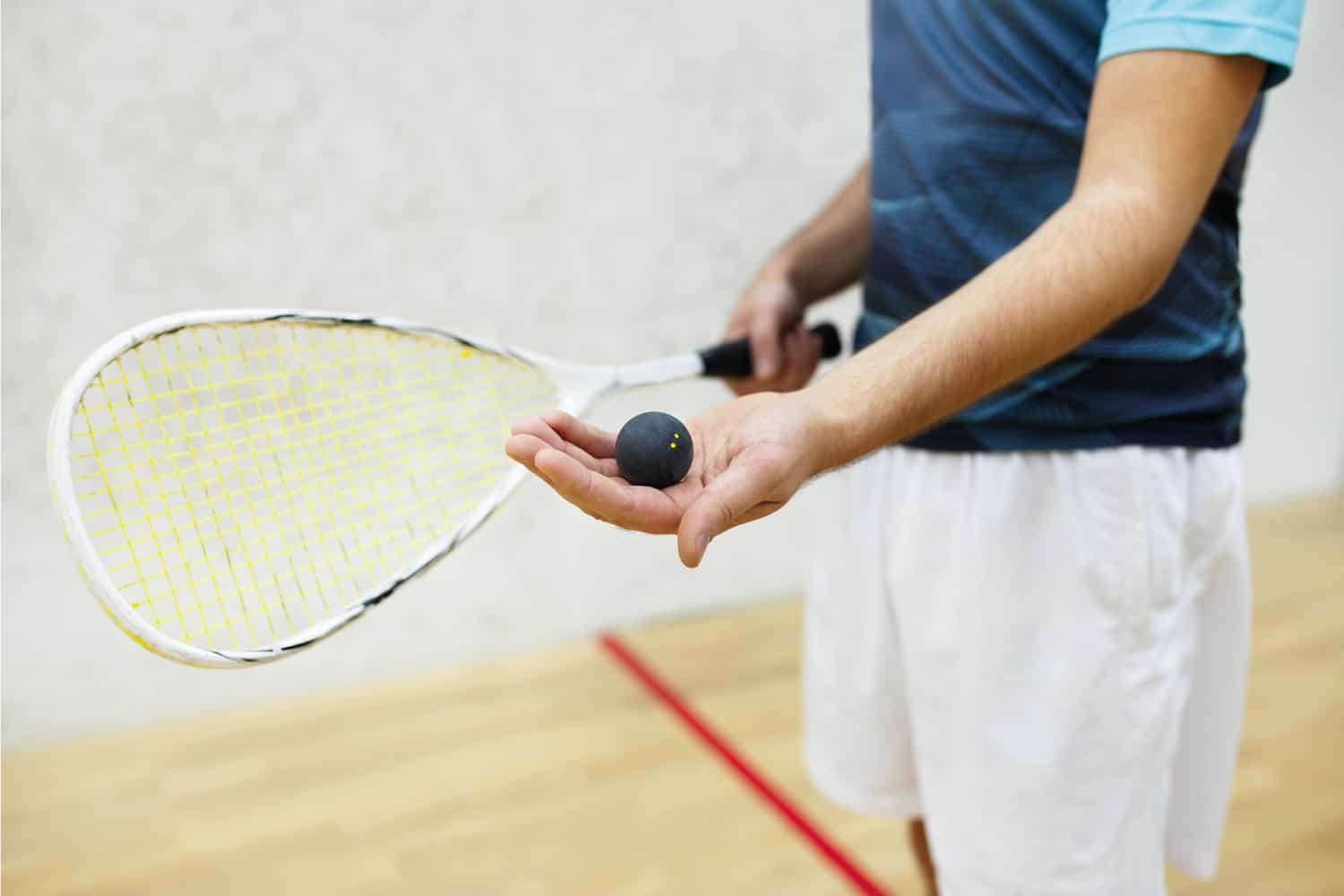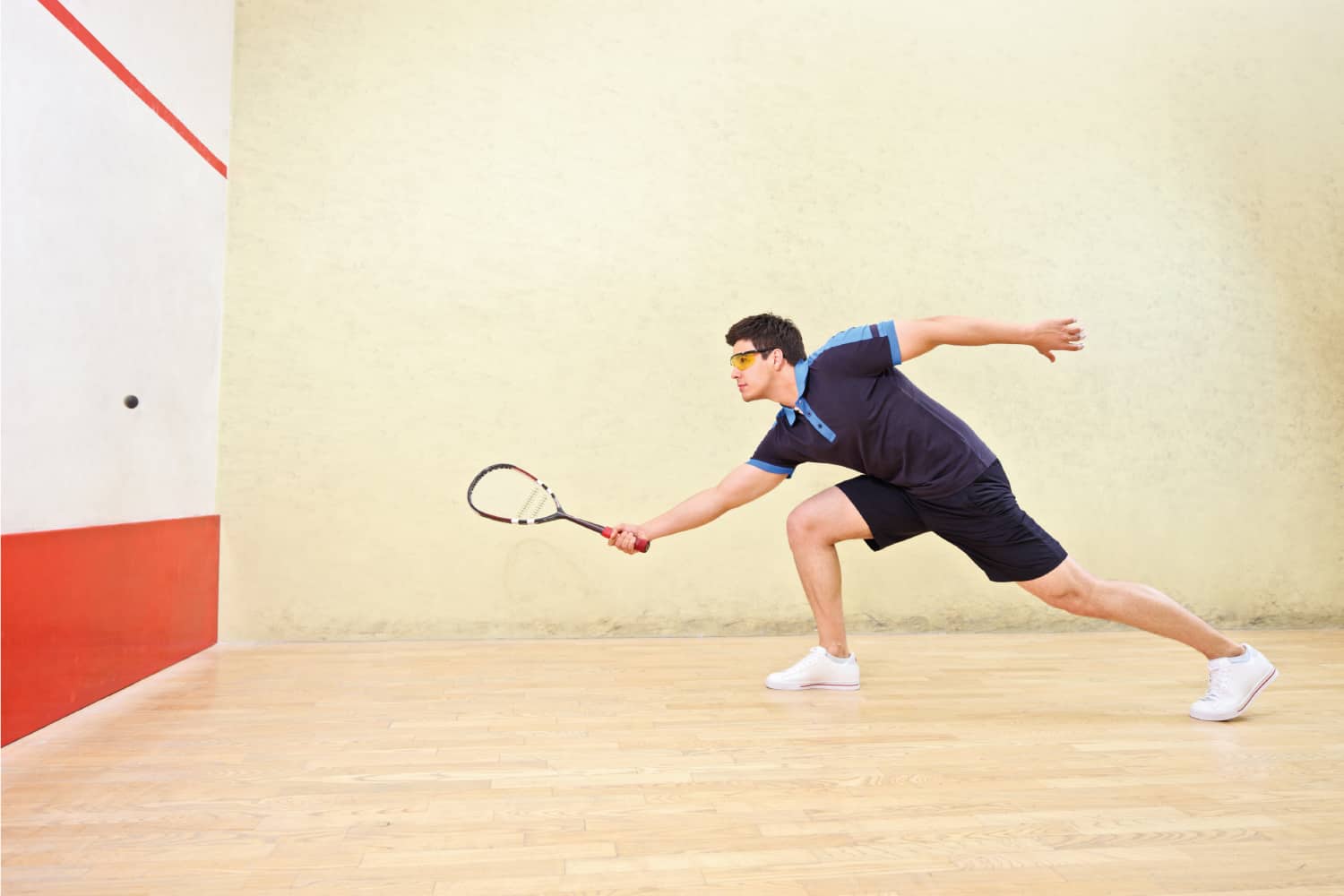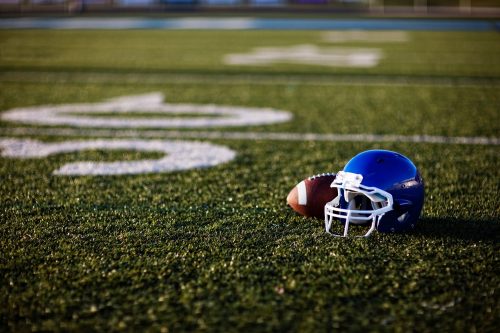Squash is a great game that lets players exercise while having fun. One of the things that makes squash fun is the social aspect of playing with other people. However, this can be a drawback if you don't have anyone to play with or have a busy schedule that makes it tough to schedule games. With that being said, can you play squash alone? We've checked with the rules to bring you the official information.
You can practice squash alone, but you cannot play a competition without at least one other person. The goal of squash is to make the ball hit the front wall and then bounce twice before the other player can return it off the front wall. This makes it impossible to compete without another player. However, solo practice is a fantastic way to improve your game so that when you compete against someone else, you can be prepared.
If you're a squash enthusiast, you might be discouraged by the fact that you can't compete alone. But don't worry, we would love to help you improve your game of squash, even if it's alone. Keep reading for more info on the benefits of solo practice, basic drills you can do, and answers to other common questions about squash.

Benefits Of Practicing Squash Alone

If you don't have anyone with whom you can play squash, there are still reasons to enjoy the game. When you practice alone, you can focus on what you need to improve upon and work on that skill repeatedly. For instance, if you struggle with serving in a real game, you can use the solo time to perfect your favorite serves.
Or, use the solo time to work on putting your shots exactly where you want them. Use this time to develop muscle memory and strategies that will help you during competitions. This is a relaxed environment where you can make as many mistakes as you'd like and work to correct them.
It is also important to familiarize yourself with the mechanics of squash: how the ball jumps off the racquet, how it bounces off the wall, and how to anticipate where the ball will go next.
We'll describe some basic squash drills that you can work on below. However, keep in mind that general fitness, lateral quickness, and endurance are also important qualities for a squash player. Don't neglect these things, even if you don't have a squash court to use.
What Are Some Solo Squash Drills?

Serving drill
One of the most important skills in squash is serving. Serving well can improve your game drastically since a well-placed serve can give you an advantage over your opponent. There are different styles of serves you can perfect, such as the lob or drive.
For a simple drill that helps you perfect your service placement, first pick out the spot where you'd like the ball to land. Mark it by setting a hula hoop, string, or short cones (like the ones below) around the perimeter of the spot.
Click here to view these cones on Amazon.
Serve the ball five times, aiming for that spot each time. Count how many times out of five you land the ball where you'd like. Then, serve the ball five more times, counting how many times the ball lands in the spot. Try to beat your score each time you complete the drill.
When you consistently land the ball in the area four times out of five or better, make the spot smaller. Move the spot around so that you can be prepared for any in-game situation.
Want more information on the rules of serving in squash? Check out our post, Who Serves First In A Game Of Squash?
Short hitting
Another basic drill you can do is called short hitting. Stand just in front of the service line. Hit the ball with your forehand off the front wall and let it bounce on the floor. When it gets back to you, hit it with your backhand. Then, hit it with your forehand. Alternate striking the ball off the front wall with your forehand and backhand, letting the ball hit the ground before returning it.
Once you've completed twenty of these in a row without messing up, scoot closer to the wall. Do the same drill, but volley each shot before it bounces. Work on making the ball hit the wall at the exact same spot every time.
This drill lets you practice using your back and forehand. It also works on consistency and shows your strengths and weaknesses as a player.
Figure eight
One of the most effective shots in squash is to put the ball in the corners formed by the front wall. This drill lets you practice hitting the ball into the corner, while also practicing returning this difficult shot.
Start at the center of the court. Hit the ball high off the front wall in the left corner, as close to the side wall as you can. The ball will bounce off the front wall, then the left wall, then will fly and hit the wall on your right. After it hits the wall on your right, strike the ball again, trying to put it in the exact same spot as the first shot.
Try to do this five times in a row without mis-hitting or letting the ball bounce twice. Once you feel comfortable with this, try to hit the ball harder and lower, moving closer to the front wall.
Repeat this process on the opposite wall. Keep in mind that most squash players find it most difficult to return shots using their backhand. It might take you longer to feel comfortable with your backhand: that's normal!
Can You Play Squash At Home?
A squash court is a highly specialized playing surface, with specific lines, materials, and sizes. Essentially, a squash court is a room with four walls. Three of the walls are made out of particle board with a smooth finish while the back wall is made out of reinforced glass. The floor of the court is made out of finished wood, similar to a gym floor.
Additionally, the front wall line -- the upper boundary of where you're allowed to hit the ball -- is 15 feet high and stretches 21 feet across. The ball is also allowed to hit any of the four walls and can be played off the back wall.

Because of these specific materials and dimensions, it would be difficult to play a proper game of squash at home. You would need a very large, smooth wall for serving or returning. You would also want a back wall so that you don't have to constantly chase the ball. Any floor that is different from a typical gym floor would be unrealistic and wouldn't give true bounces.
However, you can still enjoy some of the aspects of squash and improve portions of your game without a regulation court. If you have any smooth, durable wall, you can practice your serving. You can also improve your hand-eye coordination and learn how to use your racquet better.
If you're really itching for a game of squash with a friend, you could play a modified version with only one wall. This is not as convenient as having an enclosed court, but can still provide healthy exercise.
Want more details on the dimensions of a squash court? Read all about them in our post, How Big Is A Squash Court?
Will Playing Squash Keep You Fit?
Squash is one of the best activities for staying fit. It is one of the most efficient ways to burn large amounts of calories: a person who weighs 180 pounds will burn approximately 500 calories in a half-hour of playing squash. This means that an hour of squash -- a perfectly normal amount of time to play -- will burn about 1,000 calories.
In addition to improving your cardiovascular system, playing squash will assist in building muscular strength. The acts of striking the ball, cutting from side to side, and occasionally jumping will build strength.
This is beneficial because strength training is important in the weight loss and fitness process. When your body needs energy, it chooses between fat and muscle. Muscle is simpler for your body to use than fat is. Thus, when you burn calories with only aerobic exercise, your body will use muscle to replace the lost energy. This makes it important to continually grow your muscles and force your body to burn fat.
The other benefit of squash is that it allows the player's heart rate to go up and down. This has been proven to assist in the burning of calories and cardiovascular health.
In Closing
Realistically, you cannot compete in a game of squash without another player. However, you can practice your squash skills alone, which is a great way to get better for when you do have an opponent. Work on your serving skills, returning shots, and placing the ball exactly where you'd like.
Hopefully this article has helped you get better so that you can dominate your next game. Good luck!


![Read more about the article Does Tennis Give You Abs? [The Answer Might Surprise You!]](https://fitseer.com/wp-content/uploads/2021/10/Sexy-male-tennis-player-in-black-background-500x333.jpg)




